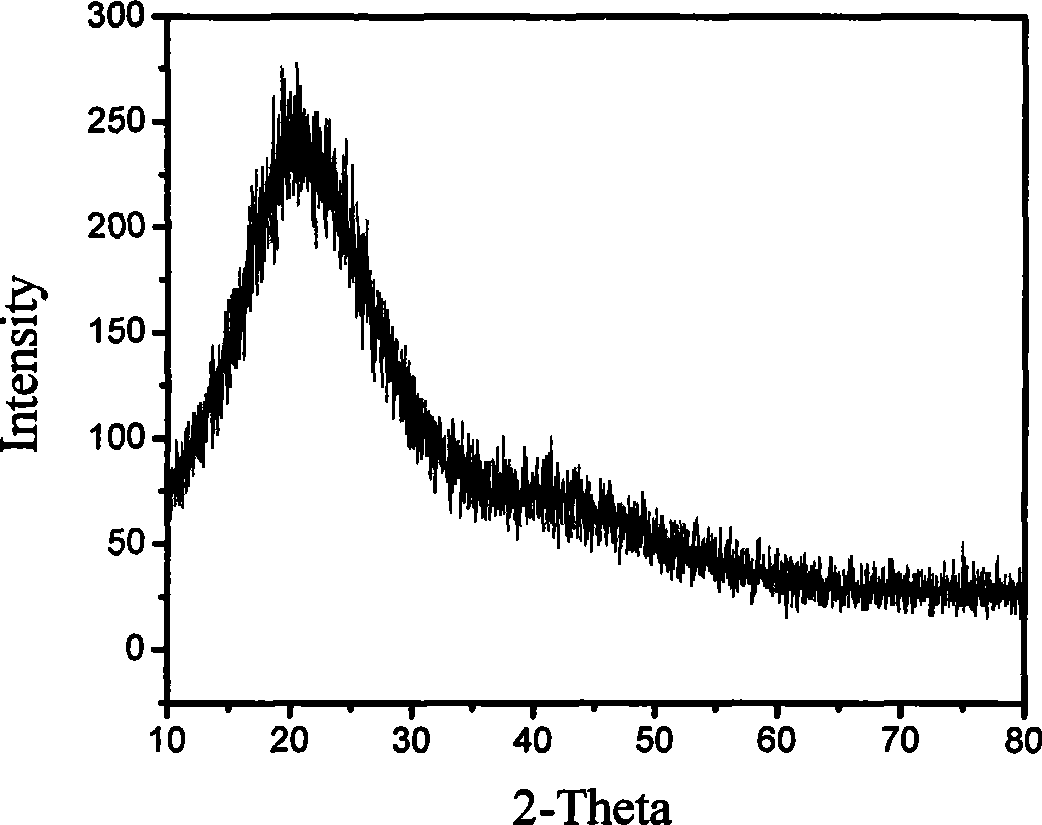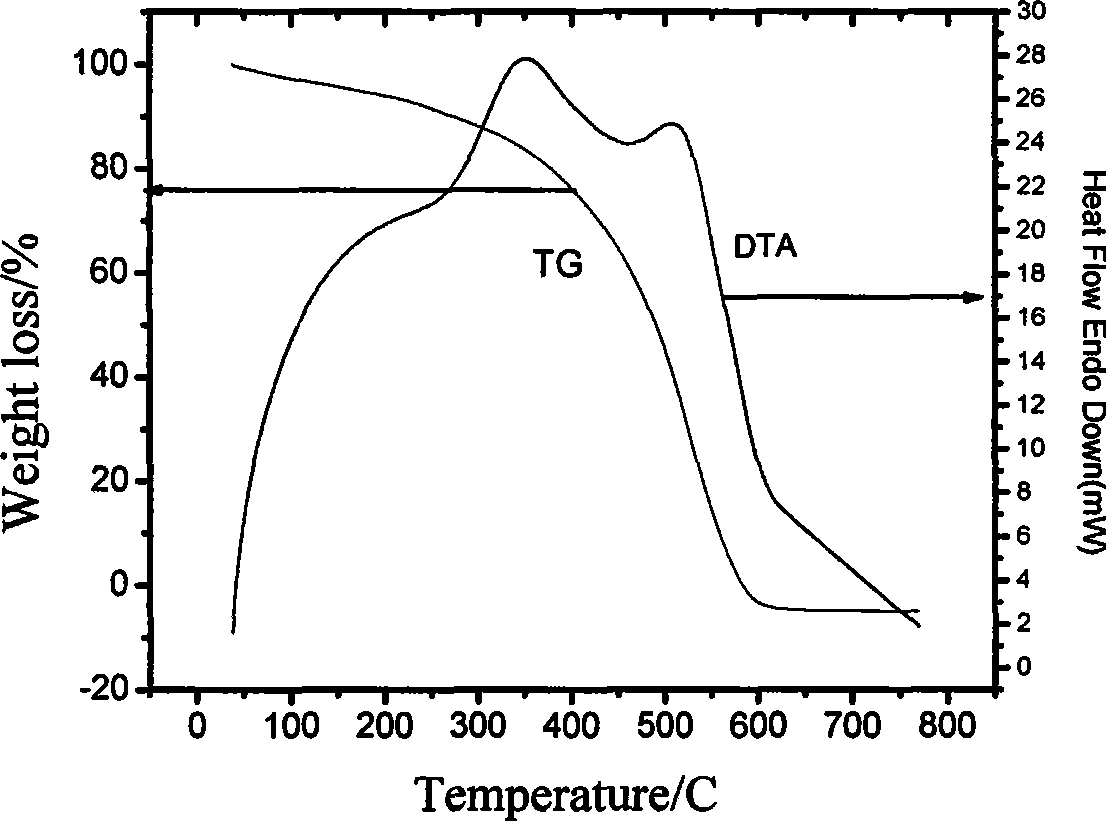Method for preparing carboneous solid acid catalyst
A solid acid catalyst and carbon-based technology, which is applied in the preparation of solid acid catalysts and carbon-based solid acid catalysts, can solve the problems of sulfonated sulfonic acid groups, etc., and achieve reduced corrosion, safe reaction process, and low raw material prices Effect
- Summary
- Abstract
- Description
- Claims
- Application Information
AI Technical Summary
Problems solved by technology
Method used
Image
Examples
Embodiment 1
[0017] Weigh 2.021g of glucose and 2.077g of sulfosalicylic acid, add a certain amount of ethanol, stir to make them evenly mixed, place them in a stainless steel autoclave lined with polytetrafluoroethylene, and react in an oven at 180°C for 24 hours. Take it out and cool it, wash it with deionized water and ethanol, and filter it, and dry the obtained product overnight at 90°C. The surface acid content measured by acid-base titration was 1.2 mmol / g.
Embodiment 2
[0019] Weigh 2.085g of sucrose and 3.104g of sulfosalicylic acid, add a certain amount of ethanol, stir to make them evenly mixed, place them in a stainless steel autoclave lined with polytetrafluoroethylene, and react in an oven at 180°C for 24 hours. Take it out and cool it, wash it with deionized water and ethanol and filter it, and dry the obtained product overnight at 90°C. The surface acid content measured by acid-base titration was 1.1 mmol / g.
Embodiment 3
[0021] Weigh 2.090g of glucose and 2.164g of p-toluenesulfonic acid, add a certain amount of ethanol, stir to make them evenly mixed, place them in a stainless steel autoclave lined with polytetrafluoroethylene, and react in an oven at 180°C for 24 hours. Take it out and cool it, wash it with deionized water and ethanol and filter it, and dry the obtained product overnight at 90°C. The surface acid content measured by acid-base titration is 1.5 mmol / g.
PUM
 Login to View More
Login to View More Abstract
Description
Claims
Application Information
 Login to View More
Login to View More - R&D
- Intellectual Property
- Life Sciences
- Materials
- Tech Scout
- Unparalleled Data Quality
- Higher Quality Content
- 60% Fewer Hallucinations
Browse by: Latest US Patents, China's latest patents, Technical Efficacy Thesaurus, Application Domain, Technology Topic, Popular Technical Reports.
© 2025 PatSnap. All rights reserved.Legal|Privacy policy|Modern Slavery Act Transparency Statement|Sitemap|About US| Contact US: help@patsnap.com


